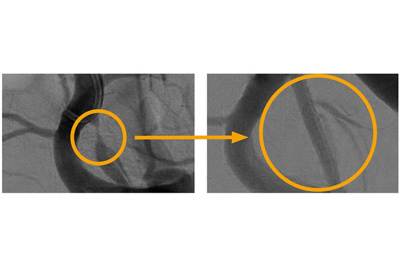Erectile dysfunction should always be checked by a doctor, because more than 70% of patients who have suffered a heart attack later indicate that they have experienced erectile dysfunction. What’s more, there has also been great progress made in relation to erectile dysfunction caused by circulatory disorders.
A common problem that is often a taboo topic
Erectile dysfunction (ED) is defined as a repeated inability to generate an erection or maintain one during sexual intercourse. It affects more than 150 million men worldwide. Yet men often do not mention this problem when they visit the doctor, because of feelings of embarrassment or shame.
Erectile dysfunction can be a sign of serious illness
ED can have many difference causes. Hormonal, neurological and psychosocial factors can all contribute to the development of ED, however it is most commonly caused by circulatory disorders.
Risk factors for such disorders include smoking cigarettes, high blood pressure, lipid metabolism disorders or diabetes mellitus. Interestingly, ED can also be an early warning sign of an impending heart attack or stroke. More than 70% of patients who have suffered a heart attack later indicate that they have experienced erectile dysfunction. So erectile dysfunction provides an opportunity for the early diagnosis of various diseases. Before the symptoms are treated using PDE5 inhibitors such as Viagra or Cialis (the most common treatment), a thorough interdisciplinary investigation into the causes of ED should be carried out. None of the diagnostic procedures are painful or physically demanding for the patient.
New treatment methods for calcified arteries
As we get older, our blood vessels lose their elasticity and become increasingly narrow. An unhealthy lifestyle accelerates this process and leads to calcifications, which in turn causes circulatory problems. If the erectile problems are being caused by calcified arteries, this is known as an arterial circulatory disorder. Circulation in the affected arteries can be improved using a balloon catheter treatment (possibly followed by the implantation of a ‘stent’), which is shown in figures 1 and 2. After a local anaesthetic is applied, a catheter is inserted into a blood vessel through a small incision in the groin. The catheter is pushed through the vessel until it reaches the constricted area, where a tiny balloon is then used to widen the narrowed artery. Thanks to advances in technology, even the extremely narrow arteries that supply the penis with blood can be reopened in this way. The surgical procedure usually requires a short stay in hospital. Patients can generally resume their normal activities the day after the operation.
In summary, erectile dysfunction represents an important early warning sign for potentially serious diseases and is still often undervalued as a diagnostic indicator. ED is frequently caused by vascular disease and these days, modern minimally invasive procedures make it possible to reopen even the most narrow arteries in the penis so that the blood can once again flow freely.

Figure 1: Severe narrowing of the left artery that supplies the penis with blood (right at the point where it connects with the inner pelvic aorta) in a 51-year old smoker with ED.
Figure 2: Vascular imaging (angiogram) after balloon catheter treatment (with stent)
Article from Prof. Dr. med. Nicolas Diehm, specialist for angiology and
Dr. med. Martin C. Schumacher, specialist for urology.
